Abstract
HeLa 229 cells were infected with genital tract strains of Chlamydia trachomatis. After incubation for varying times the infected cells were fixed and stained with the fluorescent DNA binding dyes Hoechst 33258 or DAPI for comparison with conventional Giemsa stain. Fluorochrome-treated preparations were examined by incident ultraviolet fluorescence microscopy and the Giemsa-stained preparations by dark-ground light microscopy. Chlamydial inclusion bodies could be identified unambiguously as early as 18 hours after infection of HeLa 229 cells using either Hoechst 33258 or DAPI but not until some 48 hours in Giemsa-stained preparations. The DNA rich chlamydial elementary bodies in infected egg yolk suspension were readily detected using Hoechst 33258. The fluorescent dye technique was simpler and more rapid than Giemsa staining. Using Hoechst 33258 it is possible to speed up the identification of chlamydial isolates growing in tissue culture.
Full text
PDF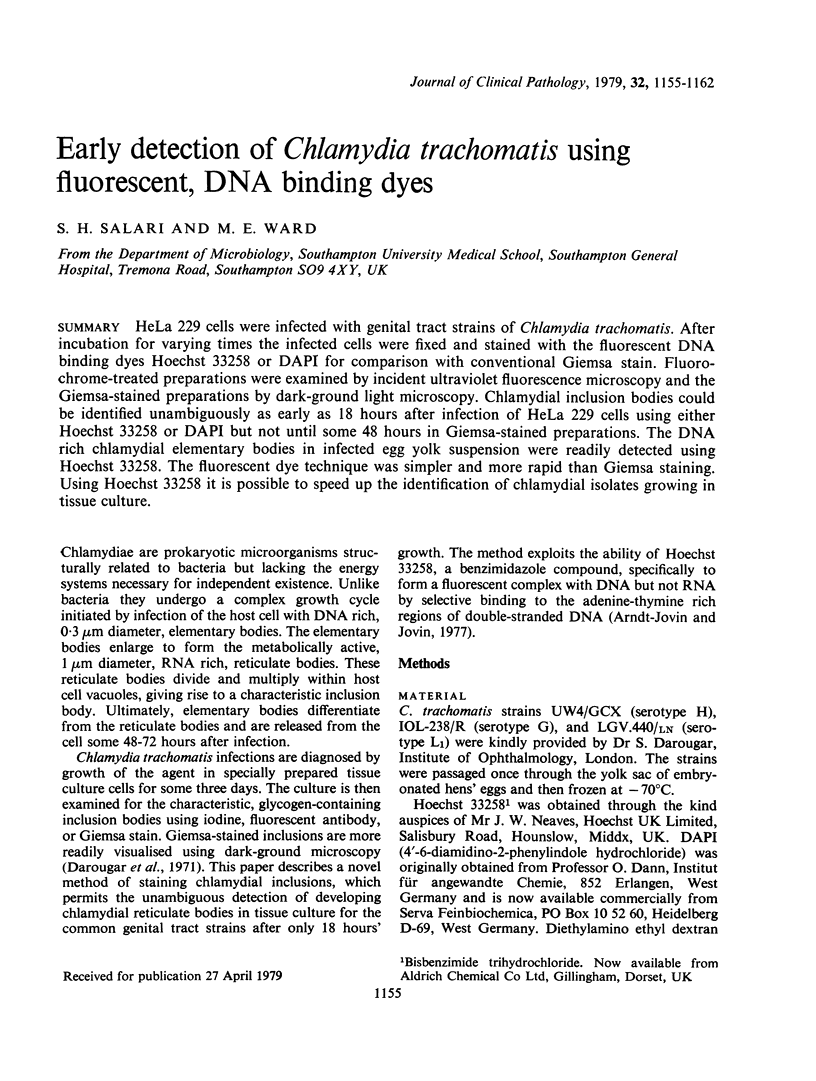
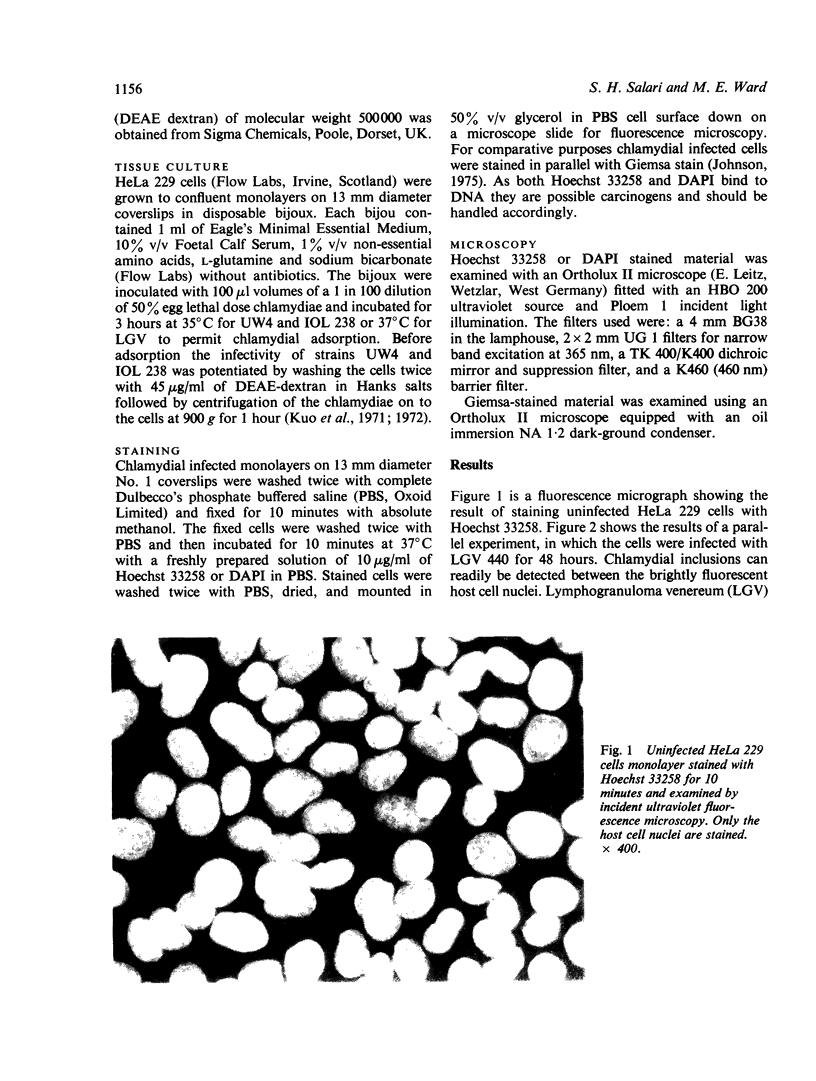
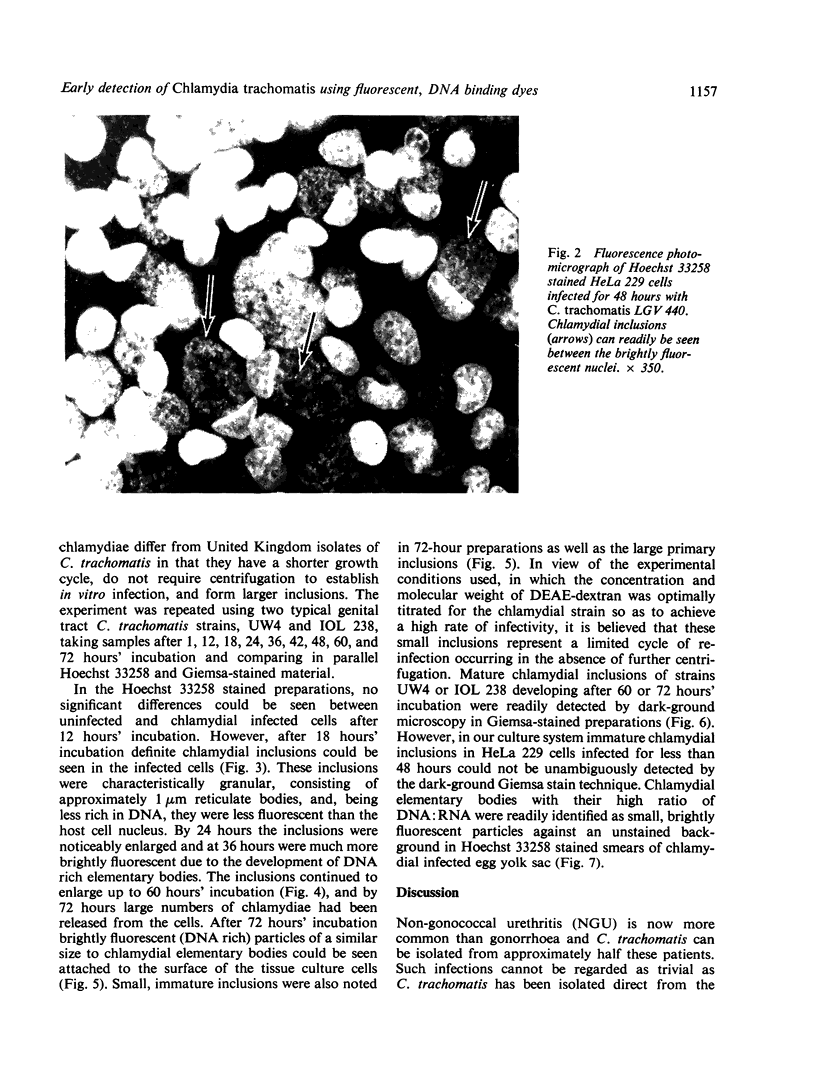
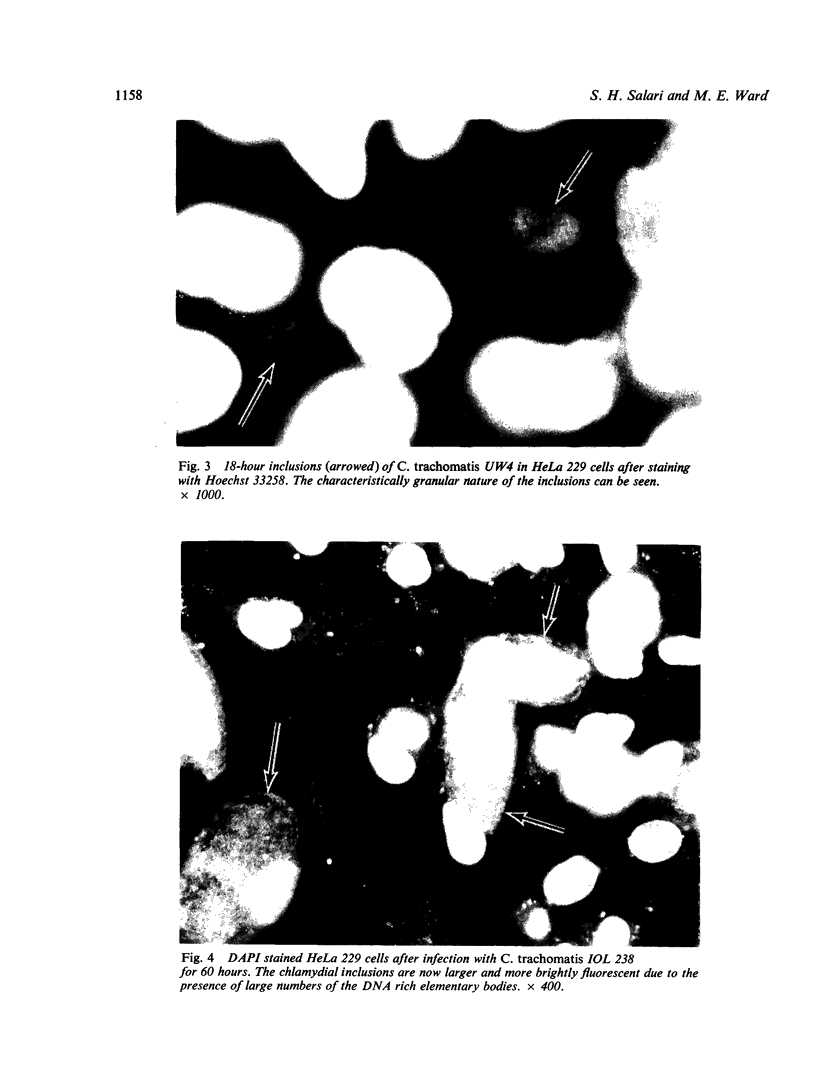
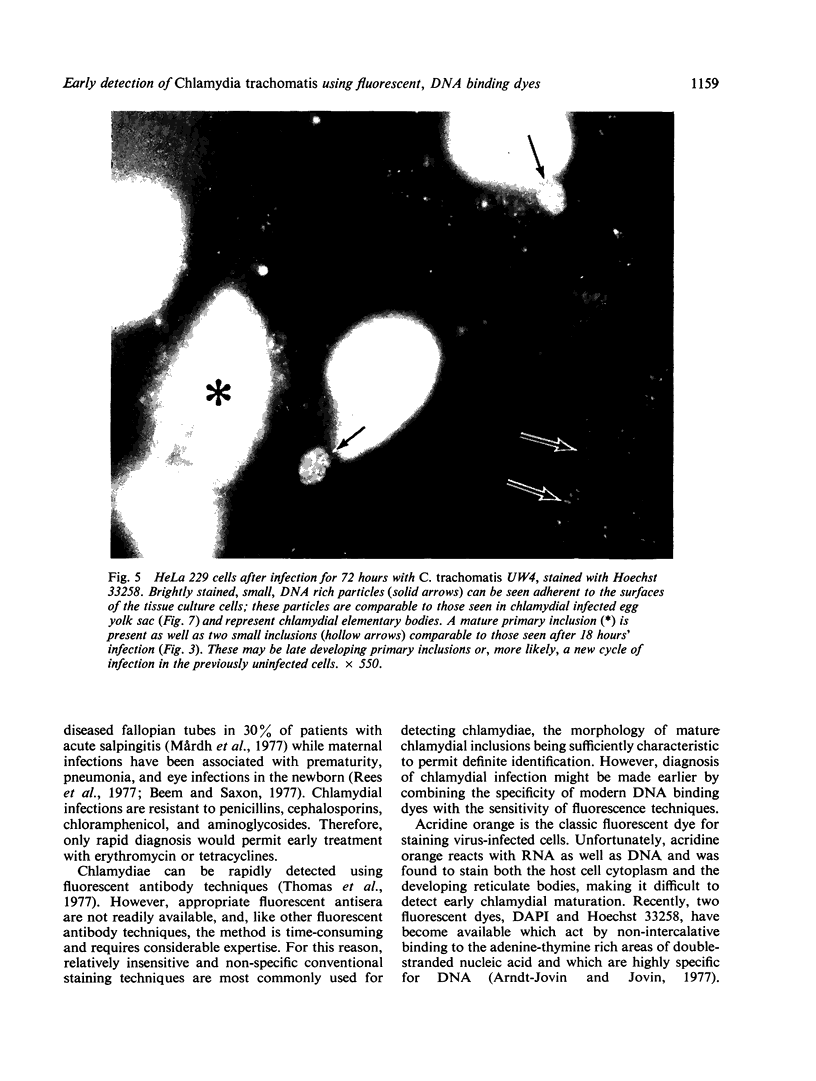
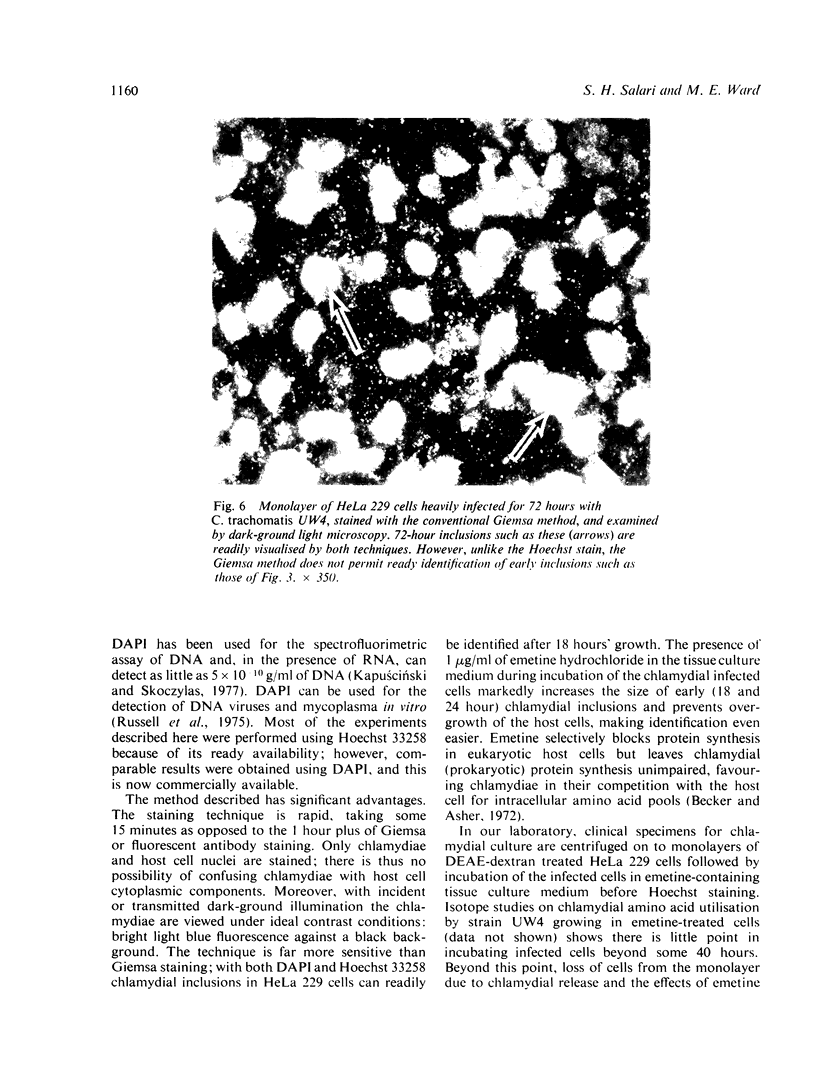
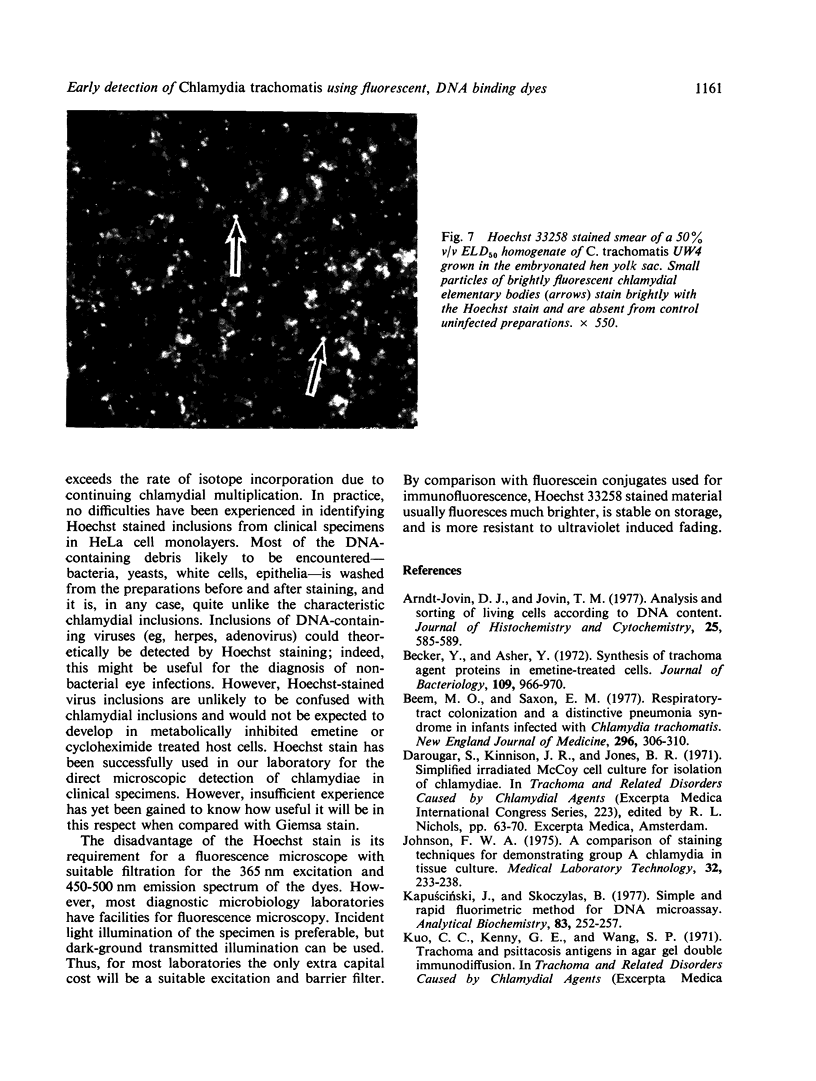
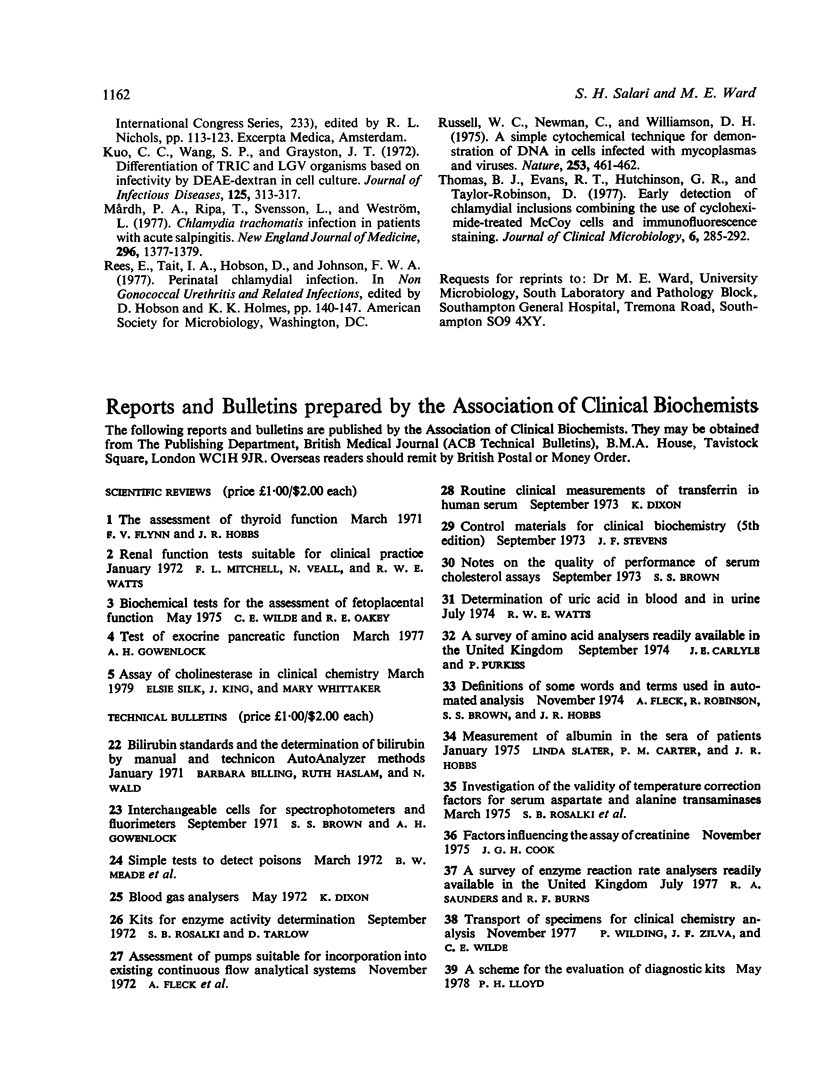
Images in this article
Selected References
These references are in PubMed. This may not be the complete list of references from this article.
- Arndt-Jovin D. J., Jovin T. M. Analysis and sorting of living cells according to deoxyribonucleic acid content. J Histochem Cytochem. 1977 Jul;25(7):585–589. doi: 10.1177/25.7.70450. [DOI] [PubMed] [Google Scholar]
- Becker Y., Asher Y. Synthesis of trachoma agent proteins in emetine-treated cells. J Bacteriol. 1972 Mar;109(3):966–970. doi: 10.1128/jb.109.3.966-970.1972. [DOI] [PMC free article] [PubMed] [Google Scholar]
- Beem M. O., Saxon E. M. Respiratory-tract colonization and a distinctive pneumonia syndrome in infants infected with Chlamydia trachomatis. N Engl J Med. 1977 Feb 10;296(6):306–310. doi: 10.1056/NEJM197702102960604. [DOI] [PubMed] [Google Scholar]
- Johnson F. W. A comparison of staining techniques for demonstrating group A chlamydia in tissue culture. Med Lab Technol. 1975 Jul;32(3):233–238. [PubMed] [Google Scholar]
- Kapuściński J., Skoczylas B. Simple and rapid fluorimetric method for DNA microassay. Anal Biochem. 1977 Nov;83(1):252–257. doi: 10.1016/0003-2697(77)90533-4. [DOI] [PubMed] [Google Scholar]
- Kuo C., Wang S., Grayston J. T. Differentiation of TRIC and LGV organisms based on enhancement of infectivity by DEAE-dextran in cell culture. J Infect Dis. 1972 Mar;125(3):313–317. doi: 10.1093/infdis/125.3.313. [DOI] [PubMed] [Google Scholar]
- Mårdh P. A., Ripa T., Svensson L., Weström L. Chilamydia trachomatis infection in patients with acute salpingitis. N Engl J Med. 1977 Jun 16;296(24):1377–1379. doi: 10.1056/NEJM197706162962403. [DOI] [PubMed] [Google Scholar]
- Russell W. C., Newman C., Williamson D. H. A simple cytochemical technique for demonstration of DNA in cells infected with mycoplasmas and viruses. Nature. 1975 Feb 6;253(5491):461–462. doi: 10.1038/253461a0. [DOI] [PubMed] [Google Scholar]
- Thomas B. J., Evans R. T., Hutchinson G. R., Taylor-Robinson D. Early detection of chlamydial inclusions combining the use of cycloheximide-treated McCoy cells and immunofluorescence staining. J Clin Microbiol. 1977 Sep;6(3):285–292. doi: 10.1128/jcm.6.3.285-292.1977. [DOI] [PMC free article] [PubMed] [Google Scholar]









